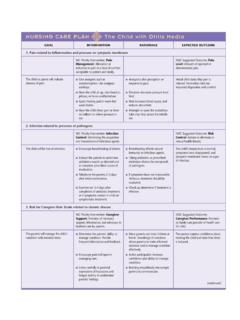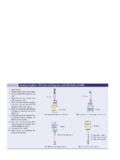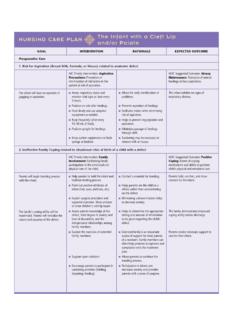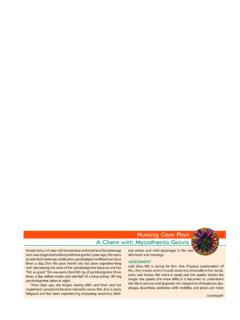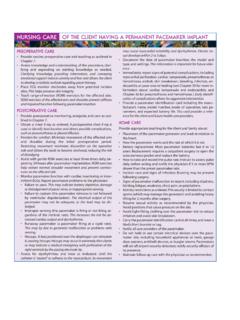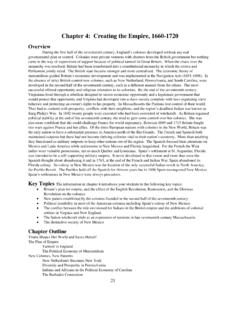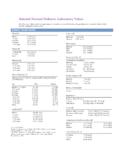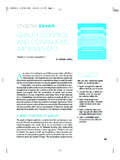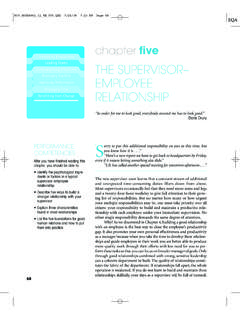Transcription of Cash, Receivables, and Inventory Management
1 Cash, Receivables, and Inventory ManagementLearning Objectives1 Understand the problems inherent in managing Managing the Firm s Investment in Cash the firm s cash balances. and Marketable Securities2 Evaluate the costs and benefits associated with Managing the Firm s Investment in managing a firm s credit policies. Accounts Receivable3 Understand the financial costs and benefits of Managing the Firm s Investment in managing the firm s investment in Inventory . Inventory W-1At the end of 2011, the Walt Disney Company (DIS) held percent of its total assets of approximately $ billion in the form of cash and short-term marketable securities. During 2011, Disney generated sales revenues of $40,893 million. Based on a 365-day year, this means Disney produced $112,035,616 in sales revenues each day. If Disney could have freed up only 1 day s worth of sales and invested it in 3-month Treasury bills yielding 1 percent, the firm s before-tax profits would have jumped by $1,120,356.
2 That is a signifi-cant sum, and it demonstrates why firms like to have efficient treasury Management departments in place. Share-holders enjoy the added profits that should, in turn, increase the market value of their common stock , if Disney s managers felt it could bear just a tad more risk, then the freed-up cash might be invested in bank certificates of deposit (CDs) of a similar maturity yielding percent to investors. That difference of a mere 20 basis points ( - ) may not seem like much, but when you put it to work on an investment of over $112 million, it produces a tidy income. Thus, by investing the excess cash in CDs rather than in Treasury bills, Disney s before-tax profits would be $224,071 greater ($1,344,427 - $1,120,356). This might be enough for the firm to hire a new business school graduate or two just like the cash and the marketable-securities portfolio are important tasks for the financial executive. This chapter teaches you about sophisticated cash Management systems and about prudent places to park the firm s excess cash balances so they earn a positive rate of return and are liquid at the same time.
3 We also explore sound Management techniques that relate to the other asset components of the firm s working capital accounts receivable and 15 provided an introduction and over-view of the concept of working - capital manage-ment. In this chapter, we explore the Management of the asset components of the working - capital equation. Accordingly, we focus on the alterna-tives available to managers for increasing share-holder wealth with respect to the most important types of current assets: (1) cash and marketable se-curities, (2) accounts receivable , and (3) Inventory . These are listed in order of declining alternatives include (1) techniques available to Management for favorably influencing cash receipt and disbursement patterns, (2) investments that allow a firm to employ excess cash balances productively, (3) critical decision formulas for determining the ap-propriate amount of investment in accounts receiv-able, and (4) methods, such as those pertaining to order quantity and order point issues, for evaluating the most suitable levels of issues are important to the financial manager for several reasons.
4 For example, judi-cious Management of cash and near-cash assets allows the firm to hold the minimum amount of cash necessary to meet the firm s obligations in a timely manner. As a result, the firm is able to take advantage of the opportunity to earn a return on its liquid assets and increase its this in mind, we begin the study of cur-rent asset Management by exploring the various aspects of the Management of cash and marketable securities. Afterward, we analyze the important issues related to the Management of accounts receivable and the Firm s Investment in Cash and Marketable SecuritiesBefore proceeding to our discussion of cash Management , it will be helpful to distinguish among several terms. Cash is the currency and coin the firm has on hand in petty cash drawers, in cash registers, or in checking accounts (demand deposit accounts) at various commercial banks. Marketable securities, also called near cash or near-cash assets, are security investments that the firm can quickly convert into cash balances.
5 Generally, firms hold marketable securities with very short maturity periods less than 1 year. Together, cash and marketable securities constitute the most liquid assets of a a Company Holds CashA thorough understanding of why and how a firm holds cash requires an accurate look at how cash flows into and through the enterprise. Figure 17-1 depicts the process of cash generation and disposition in a typical manufacturing setting. The arrows designate the direction of the flow that is, whether the cash balance increases or Cash-Flow Process The irregular increases in the firm s cash holdings can come from several external sources. Funds can be obtained in the financial markets from the sale of securities such as bonds, preferred stock, and common stock, or the firm can enter into W-2W-2cash currency and coins plus demand deposit securities security investments (financial assets) the firm can quickly convert to cash balances.
6 Also known as near cash or near-cash Understand the problems inherent in managing the firm s cash Part 5 working - capital Management and International Business Financenonmarketable-debt contracts with lenders such as commercial banks. These irregular cash inflows do not occur on a daily basis. The reason is that external financing contracts, or ar-rangements, usually involve huge sums of money stemming from a major need identified by the company s Management , and these needs do not occur every day. For example, a new product might be in the launching process, or a plant expansion might be required to provide added productive most organizations the financial officer responsible for cash Management also con-trols the transactions that affect the firm s investment in marketable securities. As excess cash becomes temporarily available, marketable securities are purchased. By contrast, when cash is in short supply, a portion of the marketable-securities portfolio is the irregular cash inflows are from external sources, the other main sources of cash arise from internal operations and occur on a more regular basis.
7 Over long periods, the largest receipts come from accounts- receivable collections and, to a lesser extent, from direct cash sales of finished goods. Many manufacturing concerns also generate cash on a regular basis through the liquidation of scrap or obsolete Inventory . At various times fixed assets may also be sold, thereby generating some cash from the investment of excess cash in near-cash assets, the cash balance ex-periences reductions for three key reasons. First, on an irregular basis, withdrawals are made to (1) pay cash dividends on preferred and common stock shares, (2) meet interest requirements on debt contracts, (3) repay the principal borrowed from creditors, (4) buy the firm s own shares in the financial markets for use in executive compensation plans or as an alternative to paying a cash dividend, and (5) pay tax bills. Again, by an irregular basis, we mean items not occurring on a daily or frequent schedule.
8 Second, the company s capital expenditure program designates that fixed assets be acquired at various intervals. Third, inventories are purchased on a regular basis to ensure a steady flow of finished goods rolls off the production line. Note that the arrow linking the in-vestment in fixed assets with the Inventory account is labeled depreciation. This indicates that a portion of the cost of fixed assets is charged against the products coming off the assembly line. This cost is subsequently recovered through the sale of the finished-goods Inventory . This is because the product s selling price will be set by managers to cover all of the costs of production, including for Holding Cash The influences that affect the firm s cash balance can be clas-sified in terms of the three motives put forth by economist John Maynard Keynes: (1) the transactions motive, (2) the precautionary motive, and (3) the speculative Maynard Keynes, The General Theory of Employment, Interest, and Money (New York: Harcourt Brace Jovanovich, 1936).
9 FIgURE 17-1 The Cash generation and Disposition ProcessIrregular cash outflowsIrregular cash inflows Bond sales Other debt contracts Preferred stock sales Common stock salesOutInPurchasePurchaseDepreciationCr edit salesCash salesCollectionsSaleLabor and materialSale Dividends Interest Principal on debt Share repurchases TaxesFixed assetsInventoryReceivablesMarketablesecu ritiesCashbalance Chapter 17 Cash, Receivables, and Inventory Management W-4 The Transactions Motive Balances held for transaction purposes allow the firm to meet its cash needs that arise in the ordinary course of doing business. In Figure 17-1, cash would be used to meet the irregular outflows as well as the planned acquisition of fixed assets and inventories. The relative amount of cash needed to satisfy transaction requirements is affected by a number of factors, including the industry in which the firm operates. It is well known that utilities can forecast cash receipts quite accurately because of stable demand for their services.
10 Computer software firms, however, have a more difficult time predicting their cash flows. In this industry, new products are brought to market at a rapid pace, thereby making it difficult to project cash flows and balances Precautionary Motive Precautionary balances serve as a buffer. This motive for holding cash relates to the maintenance of balances used to satisfy possible, but as yet unknown, cash-flow predictability of the firm has a material influence on this precaution-ary motive. The airline industry provides a typical illustration. Air passenger carriers are plagued with a high degree of cash-flow uncertainty. The weather, rising fuel costs, and continual strikes by operating personnel make cash forecasting difficult for any airline. The upshot of this problem is that because of all of the things that might happen, the minimum cash balances desired by air carriers tend to be actual business practice, the precautionary motive is met to a large extent by the holding of a portfolio of liquid assets, not just cash.

